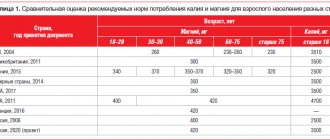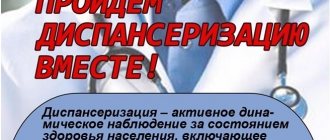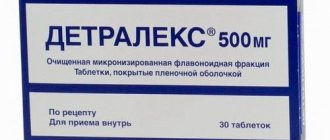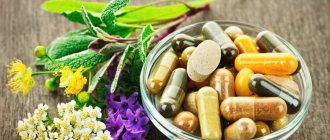Diets and various dietary restrictions lead to disruption of the natural intake of various micro- and macroelements, vitamins, and minerals from food. To normalize the functioning of the body, it is necessary to balance not only the calorie content, carbohydrate and protein composition of food, but also include foods rich in various elements in the diet. One of the most important minerals for humans is phosphorus P: it accounts for about 1% of the total human mass. What is phosphorus responsible for and how to compensate for its deficiency with food?
The role of phosphorus in the human body
Daily intake of phosphorus
Phosphorus-rich foods
Why is it needed?
The main function of phosphorus is the formation of bones and teeth in “commonwealth” with calcium and fluorine.
For the construction of bone tissue they form the compound calcium hydroxyphosphate, and for dental tissue they form calcium fluorophosphate. The Dangers of Vegetarianism
Refusal of food of animal origin is fraught not only with phosphorus deficiency. Vegetarians over time become deficient in vitamins A1, B2, B12 and D, calcium, iron, zinc and essential polyunsaturated fatty acids. These substances are absent from plant foods or are very poorly absorbed from them.
Because phosphorus is a component of many enzymes, it plays an important role in the body's use of carbohydrates and fats and in protein synthesis for the growth and regeneration of cells and tissues. Phosphorus is used to produce ATP, molecules the body uses to store energy. This substance also helps the kidneys function properly, regulates muscle contractions (including cardiac ones) and improves the conductivity of nerve fibers.
Signs of phosphorus deficiency
If too small doses of phosphorus enter the body, the functions of the element are impaired. As a result, a person may experience a deterioration in general well-being, weakness, increased fatigue, paresthesia (unpleasant sensations) in different parts of the body, decreased mental productivity, decreased appetite, and mood disorders.
Immunity decreases, a person becomes more prone to various diseases. There is a predisposition to heart and liver diseases.
What if it's not enough?
A normal balanced diet is enough to fully satisfy the need for phosphorus. Those who do not consume animal products at all are at risk of experiencing a deficiency of the substance. Excess phosphorus is also dangerous. If a person has kidney disease, even a slight excess of the daily intake of the substance can be dangerous for him. In this case, you need to carefully monitor your phosphorus intake and not exceed a dose of 800 mg per day. This is necessary because the processes of calcium and phosphorus metabolism are related to each other. A severe increase in the amount of phosphorus in the body reduces calcium levels and leads to bone diseases.
The role of phosphorus in the human body
Everyone knows the importance of the role of calcium in the body, but calcium could not perform one of its main functions without a mineral such as phosphorus (together with calcium, phosphorus forms the basis of bone tissue). Approximately 85% of all phosphorus contained in the human body is in its crystalline form in bone tissue; in much smaller volumes it is found in the intercellular fluid in the form of inorganic phosphate, which is involved in energy transfer, and in soft tissues in the form of phosphorus esters. Phosphoric acid affects the processes of glycolysis, gluconeogenesis and fat metabolism.
A lack of phosphorus in the body is usually associated with excess calcium with a deficiency of proteins and vitamin D, metabolic disorders, diabetes, and abuse of carbonated and alcoholic drinks. This state of the body is characterized by loss of appetite, apathy, decreased mental activity and physical performance, and weight loss. Lack of phosphorus in the body can also lead to arthritis.
With a long-term predominance of meat, fish, and grain products in the diet, there may be an excessive intake of phosphorus into the human body. With an excess of phosphorus, the absorption of calcium from food is disrupted, calcium is “washed out” from the bones, and its salts are deposited in the kidneys and blood vessels.
What to eat?
The main sources of phosphorus are animal products: meat and milk. If a person strives to maintain an optimal balance of calcium in the body, phosphorus is usually enough for him. The highest levels of phosphorus are found in chicken, beef, fish, dairy products and eggs. For every gram of animal protein there is 12 to 15 mg of phosphorus. There is a lot of phosphorus in nuts, cereals and beans, but it is absorbed worse from plant foods than from animal foods, since it is mainly contained in the chemical compound phytin, which the human body does not absorb. Keep this in mind if you decide to give up animal products. Fruits and vegetables contain very little phosphorus.
Phosphorus-rich foods
For clarity, we have collected products containing the maximum amount of phosphorus in one table.
| Food product | Phosphorus content per 100 g of product |
| Dried boletus | 1750 mg |
| Hemp seed | 1650 mg |
| Pumpkin seeds | 1233 mg |
| Wheat bran | 950 mg |
| Chia seeds | 860 mg |
| Oat bran | 734 mg |
| Sesame | 720 mg |
| Cocoa powder | 655 mg |
| Soybeans | 603 mg |
| Pine nut | 575 mg |
| Amaranth groats | 557 mg |
| Chicken egg yolk | 542 mg |
| Carp | 531 mg |
| Sunflower seeds | 530 mg |
| Beef liver | 497 mg |
| Pistachios | 490 mg |
| Red caviar | 490 mg |
| Beans | 480 mg |
| Chickpeas | 444 mg |
Phosphorus is found in many foods, but it is not absorbed in the same way. Phosphorus obtained from seafood and fish is absorbed by the body by 99%, from cereals and legumes - by 20%, from fruits - by 10%. This difference is due to the fact that phosphorus from foods of plant origin forms phytic compounds and is not released. In addition, there are not enough enzymes in the human intestine to break down phosphorus compounds obtained from grains and legumes.
Nutritional therapy for kidney disease: when does it start?
The main goal of the diet for kidney disease, as well as other therapeutic measures, is to curb the rate of increase in renal failure. Therefore, certain dietary restrictions are recommended to be introduced already at stage 1 of CKD, when damage to the renal tissue is not yet accompanied by clinical and laboratory signs of functional renal failure.
Following the diet prescribed by your doctor for chronic kidney disease has several goals:
- reducing the load on nephrons working in an enhanced mode;
- partial correction of the level of nitrogenous metabolic products circulating in the blood;
- improvement of acid-base balance, mineral, lipid, carbohydrate metabolism.
The more a patient's GFR falls, the more important diet becomes. For kidney diseases at the subcompensation stage, a special diet has a supportive and preventive effect. But when signs of renal failure increase, special nutrition becomes one of the main therapeutic measures.
What does a diet for kidney disease include?
The primary task of therapeutic “renal” nutrition is strict control over the quantity and quality of daily protein consumed. With an unbalanced protein diet, a variety of complications can develop. The products of their transformation in the body are toxic and sharply increase the load on the kidneys. Therefore, high dietary protein may accelerate the rate of progression of CKD. On the contrary, adequate protein intake can significantly slow the rate of development of this condition.
When drawing up a diet menu for kidney disease, the patient’s age and weight, as well as the stage of CKD, are taken into account. The required daily amount of protein is calculated individually.
A diet for the kidneys also includes limiting the intake of phosphorus, potassium and sodium, and carefully monitoring the total volume of fluid consumed. It is also necessary to monitor the total caloric content of food so that the body of a patient with chronic kidney disease receives a sufficient amount of energy.
It is impossible to create a detailed diet menu for kidney disease for several years in advance. Therefore, the most important task in the management of patients with reduced renal function is their education. A nutritionist and attending physician carry out educational work, explain the rules for preparing a diet, provide background information and give individual recommendations.
References
- Simerville, J., Maxted, W., Pahira, J. Urinalysis: a comprehensive review. Am Fam Physician., 2005. - Vol. 71(6). - P. 1153-62.
- Chernecky, C., Berger, B. et al. Laboratory Tests and Diagnostic Procedures. Saunder Elsevier, 2008.
- Fauci, A., Ksper, D., Longo, E. et al. Harrison's principles of internal medicine. The McGraw-Hill Companies, 2008.
- Pettifor, J. What's new in hypophosphataemic rickets? Eur J Pediatr., 2008. - Vol. 167(5). - P. 493-9.
- Wolf, M. Forging forward with 10 burning questions on FGF23 in kidney disease. J AmSocNephrol., 2010. - Vol. 21(9). - P. 1427-35.
Why do you need a low-protein diet for kidney disease?
Consumption of protein products leads to a complex of hemodynamic and biochemical changes at the kidney level. With normally functioning renal tissue, this does not cause persistent and irreversible consequences. And damaged kidneys do not have the ability to compensate for such changes; as a result, their nephrons experience additional negative factors and are further destroyed.
What are the consequences of consuming enough protein?
- In the kidneys, renal blood flow increases and the ultrafiltration process intensifies, which leads to aggravation of intraglomerular hypertension. This has a damaging effect on the glomerular apparatus and may become a hemodynamic mechanism of damage to renal tissue.
- Acidosis worsens, which negatively affects the functioning of cells.
- The end products of protein glycation trigger a multi-stage biochemical cascade with the production of reactive oxygen species. They provoke the release of pro-inflammatory and profibrotic compounds, which aggravates the existing tubular atrophy and fibrosis of the renal interstitium.
Failure to comply with the prescribed protein restriction will contribute to the rapid depletion of nephron functionality and progressive nephrosclerosis.
Properly selected nutrition is the key to longevity and excellent well-being.
The role of food in our lives is not only to satisfy hunger, but also to fill the body with useful substances. For a good mood and good health, a person needs a large number of valuable elements.
Food should have pleasant organoleptic properties, create a long-lasting feeling of fullness, not be burdensome for the digestive system, and be easily digested. It must be harmless against microorganisms, toxic substances and radionuclides.
Macro and micronutrients are of great importance in human nutrition.
A balanced combination of macro and micronutrients in the diet is necessary for the healthy and long-term functioning of the complex human body.
Macronutrients are nutrients that a person needs every day and in large quantities (we're talking about hundreds of grams). They promote body growth and supply energy and nutrients.
These include proteins, fats, carbohydrates and water.
Micronutrients are nutrients required by the body in mini-doses (milligrams). Promote the absorption of energy, the proper development of the body and coordinate various tasks.
These include minerals and vitamins.
What is CKD and how does it progress?
Chronic kidney disease (CKD) includes various pathological conditions with damage to renal tissue, which tend to have a long, progressive course with a gradual increase in the severity of renal failure.
It is diagnosed if the patient has signs of damage or decreased kidney function that persist for at least 3 months, regardless of the nosological diagnosis (for example, chronic glomerulonephritis, chronic pyelonephritis, diabetes mellitus, polycystic kidney disease, urolithiasis, arterial hypertension, systemic lupus erythematosus, etc. .). At the same time, changes in glomerular filtration rate (GFR) and data from other laboratory and instrumental methods for studying the excretory system are assessed.
The diagnosis of CKD is based on the following criteria:
- the presence of any signs of kidney damage, including changes in urine and blood tests, confirmed at an interval of at least 3 months;
- any irreversible structural changes in an organ, identified once during a lifetime morphological examination of the organ or during its visualization:
- a decrease in glomerular filtration rate (GFR) of less than 60 ml/min for 3 or more months, regardless of the presence of other signs of kidney damage.
There are several stages of CKD, the main criterion for their diagnosis is the GFR.
- There are signs of damage to the kidney tissue. In this case, GFR is normal or increased.
- A slight decrease in GFR (within 60–89 ml/min) indicates minor impairment.
- Moderate decrease in glomerular filtration rate (30–59 ml/min), this stage is often divided into stages A and B.
- GFR is significantly reduced (15–29 ml/min), severe disorders are diagnosed.
- End-stage renal failure, GFR falls below 15 ml/min. Requires renal replacement therapy.
In older people, a GFR level below 60 ml/min is considered pathological. An indicator above this is considered the age norm if the patient does not have “renal” risk factors. In this case, CKD is not diagnosed.
MACRONUTRIENTS
Squirrels
These are complex high-molecular substances that are one of the main components of nutrition. Their role is as follows:
- They “build” new cells, participate in the formation of tissues, muscles, tendons, and hair.
- Deliver chemical elements to cells.
- Helps in the functioning of the muscular system.
- Protein hormones control the metabolic process.
- Serve as an additional source of energy.
• Plant proteins are slow to digest and are found in small quantities in most plant foods. They are significantly inferior to animal proteins due to the lack of some essential amino acids in the composition. To reach your daily requirement, you need to eat at least a kilogram of such food.
Plant foods often contain enzymes that block or slow down the action of protease, an enzyme that breaks down proteins in the human body, so plant proteins are more difficult to digest.
Cabbage, radishes, cereals, beans, spinach, nuts, seaweed, mushrooms, dried fruits and fruits.
• Animal proteins are more valuable due to the large amount of amino acids and are absorbed quite quickly.
Meat, fish, poultry, dairy products, eggs, seafood.
The required amount of protein for a person per day depends on gender, body weight and lifestyle. On average 1.2 - 1.5 g. per kilogram of weight.
When calculating your protein needs, you should also take into account your physical activity.
- Sedentary lifestyle - 1.2 g.
- Sports activities 3 times a week - 1.4 - 1.6 g.
- Regular strength training to build muscle mass - 1.7 - 2 g.
During the muscle building stage, it is difficult to get the required portion of protein from foods. When the body needs urgent reinforcement with amino acids, it is more convenient to use the necessary protein supplement. For example, whey protein contains amino acids isolated from whey, which are very quickly absorbed by the body. It increases strength and muscles.
Fats
Fats (lipids) are the most high-calorie nutrient that does not dissolve in water; it “stores” energy, which serves as “fuel” if necessary. Their main functions in the body:
- When oxidized, fats supply 2 times more energy than proteins and carbohydrates.
- Adipose tissue protects the body from hypothermia, because conducts heat poorly.
- Fats have a positive effect on brain function, memory and concentration.
- Restore cells after heavy physical activity.
- Converted into steroid hormones (testosterone, estrogen, cortisol, progesterone).
• Saturated fats are fats found in animal products.
Lard, meat, oil (butter, coconut, palm and cocoa beans).
• Unsaturated are fats that ensure easy passage of nutrients and insulin across cell membranes, which significantly promotes protein synthesis.
— Monounsaturated (Omega-9)
Olive and peanut oil, olives, poultry, avocado.
— Polyunsaturated (Omega-3 and Omega-6)
Fish, fish oil, cottonseed, rapeseed, corn, flaxseed, sunflower oil.
We need both types of fats, but we need to monitor the balance of saturated fats: their excess harms the heart and blood vessels.
The amount of fat the body needs depends on the person’s weight. With normal weight – 0.7-2 g. If you are overweight, no more than 0.7 g per kilogram of weight. You should not lower the norm to combat excess weight - a lack of fat can undermine the immune system and disrupt overall hormonal levels.
Carbohydrates
Carbohydrates include organic substances that are the body's main source of energy.
Simple (fast) - easily digested, sharply increase blood sugar levels, their constant consumption leads to a deterioration in metabolism and obesity.
Baked goods, white sugar, ice cream, candy, soda, etc.
Complex (slow) - characterized by interconnected saccharides (up to hundreds of elements). They produce energy during digestion gradually, thereby providing a feeling of fullness for a long time. They feed the brain (glucose) and muscles (glycogen).
Cereals, durum wheat pasta, legumes, brown rice, green vegetables.
Indigestible (fiber) is an important component of plant foods, from which the body benefits for the smooth functioning of the gastrointestinal tract. When indicating the composition of a product, they usually appear on a separate line, since they are not digested, and therefore are not taken into account in calorie calculations.
Bran, cereals, avocados, bananas, apples, sesame seeds, tomatoes.
The body needs carbohydrates:
- Minimum - 3 g
- With moderate training - 5 g
- During active training - 8 g
Water
A colorless and odorless liquid, vital for quenching thirst. 70% of a person consists of this irreplaceable source of life.
At first glance, such simple water has a rather complex composition, including a variety of useful elements: iodine, fluorine, chlorine, selenium, calcium, radium, etc. The highest quality for drinking is water purified from mechanical impurities, freshwater sources or artesian water, containing a small amount of salts. For example, regular consumption of distilled water is dangerous to health, since this water is so thoroughly purified that it cannot perform its functions in the body - our body requires electrolytes, a certain amount of which must be present in the water.
| Name | Role in the body | Products | Requirement per day | Normal for physical loads |
| Vitamin A | responsible for vision, hair and skin condition | liver and fish oil | 1 mg | 1.2 mg |
| B vitamins | take an active part in energy metabolism | meat, cereals, yeast | 1-2.4 mg | 5-50 mg |
| Vitamin C | prevents the appearance of free radicals, promotes iron absorption, important for connective tissues | fresh vegetables and fruits | 70 mg | 200-300 mg |
| Vitamin D | controls the exchange of calcium and phosphorus. The body can produce it independently under the influence of ultraviolet radiation | egg yolk, butter, cream | 10 mcg | 25 mcg |
| Vitamin E | reduces the likelihood of thrombosis, has a positive effect on skin and muscle development | cabbage, spinach, beets | 10 mg | 100 mg |
| Vitamin K | protects the prostate gland and liver from the development of cancer, is responsible for blood clotting. Produced in small quantities in the intestines with the help of microorganisms | green vegetables, eggs | 80 mcg | 130 mcg |
| Vitamin P | protects the body from free radicals and protects blood vessels | bright vegetables and fruits, green tea. | 50 mg | 200 mg |
On average, a person needs to drink two liters of water per day. It saturates every cell with oxygen and nutrients. Helps transform food into fuel. Flushes and cleanses the body of waste (sweat, urine, saliva, tears).










